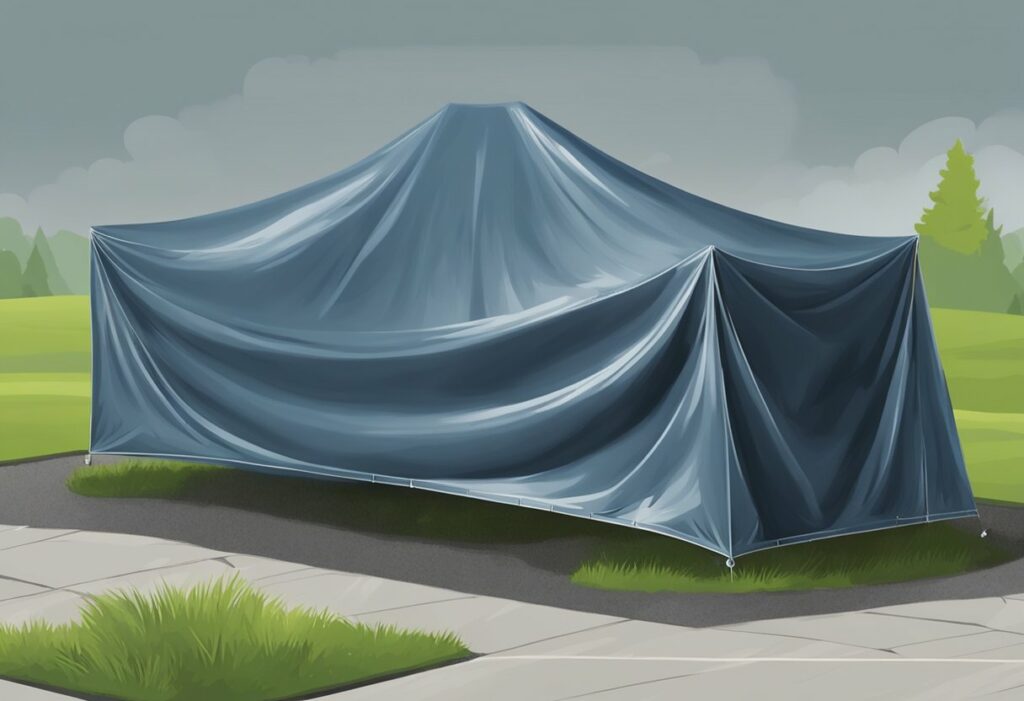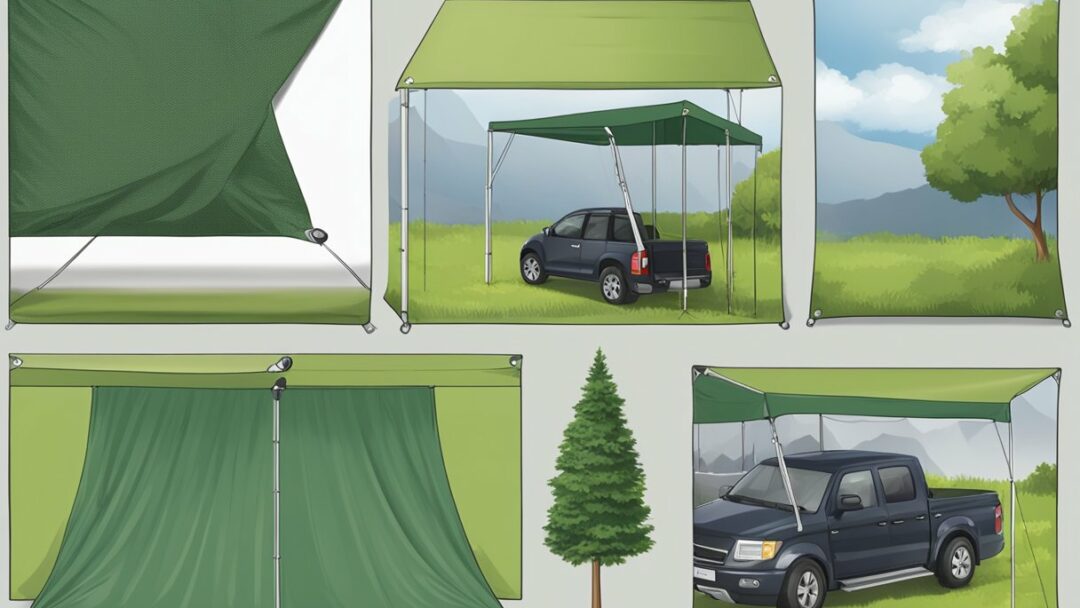Tarpaulins, or tarps as they are commonly known, are versatile protective sheets that have become ubiquitous in various industries and households. These large, flexible materials are engineered to be strong, water-resistant, or waterproof, providing essential protection against environmental elements. The most prevalent materials used for tarps are canvas, polyester, polyethylene, and polypropylene. Each material offers distinct advantages, ranging from durability to water resistance, and the choice of material often depends on the intended use of the tarp.
The design and features of tarps vary widely to suit specific purposes. For instance, some tarps are constructed with reinforced grommets and edges to withstand strong winds when used as covers, while others may be treated with UV-resistant coatings to prevent damage from prolonged sun exposure. High-density weaving and lamination processes are also employed to enhance the material’s protective properties. Furthermore, tarps can be customized for different uses, from covering vehicles and boats to serving as shelters during camping.
Key Takeaways
- Tarps are made from materials like canvas, polyethylene, and polyester.
- They are designed with features for durability and protection from the elements.
- Customizable options are available for specific applications.
Basic Components of Tarps
Tarpaulins, commonly known as tarps, are versatile fabrics used for protective coverings. They are made from a range of materials, each offering distinct benefits for specific applications.
Polyethylene (Poly Tarps)
Polyethylene tarps are highly valued for their durability and waterproof properties. This material type is resistant to rips and tears, making it suitable for heavy-duty uses. Polyethylene tarps often serve purposes such as outdoor covers or construction site protectors.
Canvas Tarps
Canvas tarps are woven from cotton, which contributes to their breathable nature. They are less water-resistant compared to polyethylene, but they’re ideal for applications that require a barrier against wind and dust while maintaining air circulation.
Vinyl Tarps
Vinyl tarps are recognized for their extreme resistance to abrasion and moisture. They are constructed from synthetic materials, which include a blend of polyester mesh and a vinyl coating, offering a sturdy solution for industrial and agricultural uses.
Mesh Tarps
Tarps made of mesh materials offer unique benefits, such as reducing sunlight exposure while allowing water to pass through. These are ideal for applications where airflow is important, like covering truck beds or as shades for outdoor spaces.
Polypropylene
Tarpaulins can also be made from polypropylene, which offers a good balance between strength and lightness. These tarps are resistant to most acids and alkalis, making them suitable for chemical coverage and storage tasks.
Tarp Design and Features
The design of a tarpaulin, commonly known as a tarp, is critical for its durability and effectiveness in protection. Specific features such as reinforced grommets and heat-sealed seams are vital for performance, especially in challenging weather conditions.
Grommets and Edges
Tarps often include grommets, which are metal eyelets spaced along the edges that allow for easy tie-down and securing of the tarp. These grommets are typically rust-resistant and can withstand tension without tearing the material. The edges of a tarp are designed for strength, often being reinforced with polyethylene rope that is heat-sealed within the hem to prevent fraying and to enhance the tarp’s structural integrity.
Coatings and Treatments
In order to be water-resistant or waterproof, tarps are treated with various coatings. Commonly, a polyurethane coating or a resin is applied, which also offers UV protection and resistance to mildew. Certain plastics, like polyethylene, are inherently water-resistant and are laminated on woven fabric to create a robust, waterproof barrier.
Hems and Seams
The durability of a tarp is significantly determined by the quality of its hems and seams. For increased resilience against tearing, hems are typically folded back and then heat-sealed or sewn. Seams can be heat-sealed for waterproof tarps, ensuring no water penetrates through stitched areas. Advanced stitching patterns and techniques are often applied to seams to counteract tearing and stress.

Technical Specifications
In determining the functionality and suitability of tarpaulins for various applications, the technical specifications such as durability factors, thickness and weight, and dimensions are critical. These specifications directly influence a tarp’s strength, protection capabilities, and abrasion resistance.
Durability Factors
The durability of a tarp is influenced by its material composition and treatment. Polyethylene tarps offer water resistance and UV protection due to a chemical coating. Vinyl tarps, made from polyvinyl chloride (PVC), are recognized for their resistance to tearing and abrasion, providing robust protection against harsh conditions. Canvas tarps are appreciated for their breathability, which minimizes condensation, and their tight weave enhances water resistance.
Thickness and Weight
Tarp thickness is often measured in mils (1/1000th of an inch), and the weight is typically expressed in ounces per square yard. A higher number indicates a thicker and heavier tarp, which often correlates with increased durability and abrasion resistance. For example, a heavy-duty poly tarp might have a thickness of 12 mils and weigh 6 ounces per square yard, providing a balance between durability and weight.
Dimensions
Tarps come in various dimensions, catering to different needs and use cases. They can range from small, portable covers of a few square feet to large sheets that cover expansive areas. The size of the tarp is tailored to the protection requirements, be it for a small woodpile or a large stadium. Accurate dimensions are pivotal for ensuring adequate coverage and the overall effectiveness of the tarp.
Tarp Usage and Applications
Tarps, also known as tarpaulins, are versatile materials used widely across various industries due to their water resistance, durability, and affordability. These covers are crafted from materials like polyethylene, canvas, and vinyl, each serving specific functions from basic coverage to protective shielding in demanding environments.
Equipment and Vehicle Covers
For equipment and vehicles, poly tarp and canvas tarp offer effective protection against weather elements, making them ideal for truck tarps and car covers. They shield against rain, provide temporary shelter, and can also be used as equipment covers to prevent dust accumulation.
Construction and Warehousing
On construction sites, heavy-duty tarps play a critical role as they provide a durable and affordable solution for protecting building materials or serving as drop cloths during painting. Warehouses utilize tarps to section off areas or products, enhancing the overall service and manufacturing process within the facility.
Agriculture and Gardening
Agricultural tarp applications extend to plant protection in the yard, against extreme weather, and to create optimal growing conditions. Woven or clear PVC tarps provide breathability for outdoor equipment, act as ground covers for gardening, and maintain humidity for agriculture.
Outdoor Recreation
Recreational uses include colored tarps and party tents for events, while black mesh tarps are applied in landscaping for their aesthetic and shade providing qualities. Blue tarps, known for their general-purpose use, are commonly seen in campsites as shelters, pool covers, or even military-grade applications for outdoor equipment protection.
Customization and Variations
When selecting a tarp, customization options extend from size and shape to the tarp’s color and its adaptations for specific applications. These variations ensure that the tarp meets the precise needs of its use, whether it is for agricultural purposes, construction sites, or recreational activities.
Size and Custom Cuts
Manufacturers often provide tarps in pre-determined sizes, but custom cuts are available to fit unique requirements. For instance, poly tarps can be ordered in bulk rolls and then cut to specific dimensions, ensuring coverage for areas of unconventional sizes. Meanwhile, canvas tarps and vinyl tarps are also offered in various dimensions, catering to the needs ranging from small covers for equipment to large ground covers for outdoor areas.
Color and Appearance
The appearance of a tarp can be as important as its functionality, with colored tarps often utilized for aesthetic or regulatory reasons. Bright colors can be used to signal caution at construction sites, while more subdued tones might blend into environmental surroundings. Additionally, mesh tarps usually come in a variety of colors and provide a semi-transparent option, which can be essential for maintaining visibility and airflow.
Specific Use Adaptations
Tarps are ingeniously adapted for specific uses, incorporating materials like UV-resistant coatings or mildew-resistant treatments. Vinyl tarps are known for their durability and resistance to water and tear, making them suitable for heavy-duty purposes. Conversely, mesh tarps are preferred when breathability is a concern, commonly utilized for truck beds and garden shade. For those requiring minimal environmental impact, canvas tarps made of cotton are biodegradable and thus an eco-friendlier option.
Manufacturing and Material Science
The production of tarps involves complex manufacturing processes and material sciences that ensure the development of durable, water-resistant, and practical products catered to various uses from camping to commercial applications.
Production Processes
In tarp manufacturing, materials such as polyethylene, canvas, and vinyl are commonly used. The Production Processes typically start with the base fabric being woven to the desired strength and density. For heavy duty applications, manufacturers may incorporate multiple layers that are then heat-sealed or sewn together to enhance the tarp’s durability. High temperatures are often involved in melting and sealing synthetic materials, ensuring a water resistant finish. Rolls of fabric are cut into panels, which then are pieced together to form larger sections.
Canvas tarps often undergo a dyeing process before being treated with coatings for water and mildew resistance. Meanwhile, poly tarps might skip the dyeing step as color can be added directly to the resin mixture. Through processes like lamination or poly coating, tarps achieve additional properties such as UV resistance or improved water resistance.
Material Properties and Standards
High-grade materials used in tarp production provide qualities like tear resistance and weatherproofing. The Material Properties of tarps are critical to their performance — polyethylene tarps, for instance, are known for their excellent water resistance, a result of their tightly sealed surfaces. Standards are in place to ensure materials meet certain criteria, such as thickness, weight (denier), and durability. Commercial grade tarps, typically made from heavier materials, must satisfy higher thresholds for these properties.
The standards also dictate how edges must be hemmed and reinforced to prevent fraying and improve longevity. Reinforcement at stress points and the inclusion of rust-resistant grommets are other considerations taken into account to meet both consumer needs and industry standards.
Industry and Trade
The Industry and Trade of tarps is a significant sector due to the material’s wide range of applications. Manufacturers operate on a global scale, often importing spools of raw materials to then process and export finished products. The versatility of tarps—from camping gear to covers for construction sites—drives an ongoing demand for high-quality, durable products. Large-scale, heavy duty tarps are frequently used in agriculture, construction, and by the military, necessitating a robust trade network that can support the significant volume and variety of tarps required.

Environmental and Maintenance Considerations
When considering the environmental impact and maintenance needs of different tarp materials, it’s essential to account for their lifespan, ease of care, and the implications of disposal. This section outlines the crucial aspects pertaining to the longevity, cleaning, repair practices, as well as recycling and disposal options for various tarp materials.
Longevity and Storage
- Nylon Tarps: Nylon is praised for its exceptional durability and resistance to abrasion. To prolong its lifespan, tarps should be stored dry and away from direct sunlight to prevent degradation from UV rays.
- Poly Tarps: Typically cost-effective, poly tarps are lightweight and water-resistant but can become brittle with prolonged exposure to the elements. They should be kept in a cool, shaded environment when not in use.
- Canvas Tarps: Canvas is robust and breathable, offering longevity if maintained properly. Users should ensure canvas tarps are completely dry before storage to prevent mold and mildew.
- Vinyl Tarps: Known for their strength and ability to provide privacy, vinyl tarps are highly durable against tear and UV damage. They can withstand different weather conditions but should be rolled, not folded, to avoid creases that could lead to weak spots.
Cleaning and Repair
- Nylon and Poly Tarps: Clean with mild soap and water; repair tears with tarp tape or by heat sealing for larger damages.
- Canvas Tarps: Use a brush for loose dirt and a mild detergent for stains. Small punctures and tears can be sewn with a thick thread or patched.
- Vinyl Tarps: Wipe with soapy water and rinse; use vinyl-specific repair kits to address any tears or holes to restore functionality.
Recycling and Disposal
- General: Recycling options may be limited; it’s crucial to verify if a local facility accepts the specific tarp material.
- Nylon: Few facilities recycle nylon tarps; consider donation or repurpose for extended use.
- Poly Tarps: Made from polyethylene, these can sometimes be recycled where facilities accept #4 plastic.
- Canvas: Being cotton-based, canvas tarps are often compostable if they are not treated with waterproofing chemicals.
- Vinyl Tarps: Recycling is challenging due to the PVC content; however, repurposing for alternative uses can mitigate waste.
Regulatory and Safety Features
Tarp materials are designed with safety and regulation compliance in mind, addressing concerns such as fire risks and prolonged exposure to the sun. Manufacturers often incorporate specific treatments and features to meet these needs.
Fire Resistance
Tarps fabricated from materials like polyethylene, polyvinyl chloride (PVC), and canvas are often treated with flame-retardant chemicals to reduce the risk of fire. These treatments help the tarps to self-extinguish when they come into contact with fire, making them suitable for use in various settings where fire safety is a priority.
UV Protection
Prolonged exposure to UV rays can degrade tarp materials, leading to brittleness and a loss of integrity. Many tarps are therefore treated with UV inhibitors or constructed from UV-resistant materials to prolong their lifespan and maintain their waterproof and water-resistant properties.
Reinforcements for Safety
To enhance safety and durability, tarps may include reinforced grommets and corner guards that also aid in securing the tarp. Seam strength and abrasion resistance are critical considerations, ensuring that the tarps can withstand harsh conditions and usage without compromising their protective qualities.
Frequently Asked Questions
This section answers key questions about the composition and characteristics of different tarp materials.
What materials are used to make canvas tarps?
Canvas tarps are typically made from natural cotton fibers or a blend of cotton with synthetic materials. They are often treated with water-resistant substances like wax or oil to enhance durability.
How is vinyl tarp different from other tarp materials?
Vinyl tarps are known for their strength and ability to resist moisture, oil, acid, and mold. Vinyl is different from other materials because it’s also highly durable and suitable for heavy-duty use, such as in truck covers and gym floor covers.
Can tarps be made entirely waterproof, and if so, which material is used?
Yes, tarps can be made completely waterproof, with polyethylene being a commonly used material for creating waterproof tarpaulins due to its sturdy and water-resistant nature.
What is the difference between polyethylene and polypropylene tarps?
Polyethylene tarps are known for their toughness and versatility, making them ideal for a wide range of applications. Polypropylene tarps, on the other hand, are lighter and often used for temporary coverage, with some designs specialized for breathability and reduced moisture build-up.
What are the typical uses for PVC tarpaulin?
PVC tarpaulins are highly effective for outdoor coverage due to their robust and waterproof nature. They are frequently used for applications like truck covers, tents, and industrial coverings.
Are there different materials used for colored tarps, such as blue or grey ones?
Colored tarps, like blue or grey ones, are often made from the same materials as their non-colored counterparts, including polyethylene, vinyl, and canvas. The color is added during the manufacturing process for purposes such as UV resistance or to signal tarp strength.

